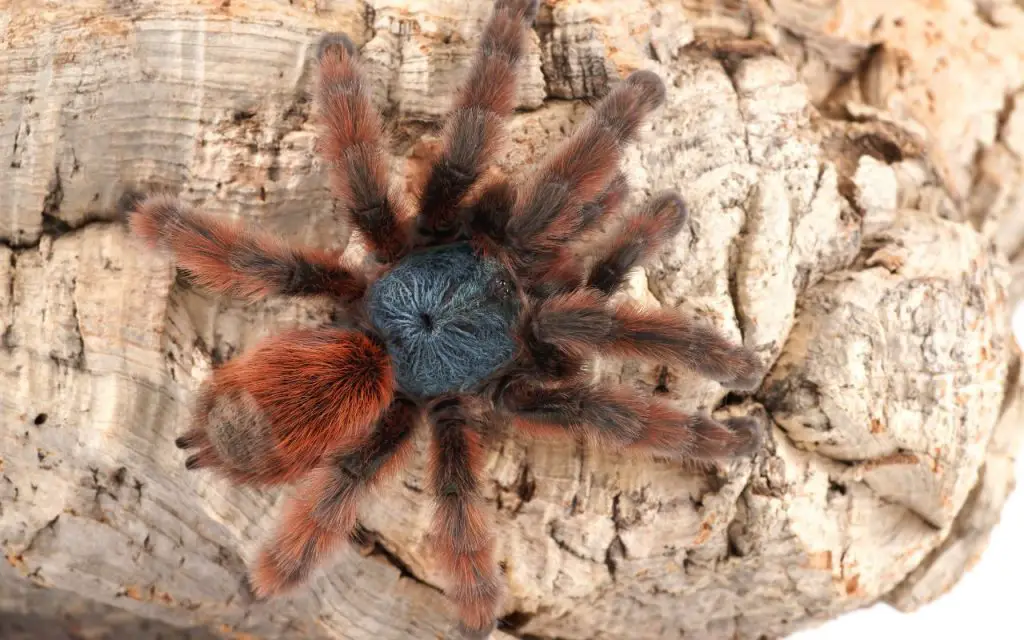Last updated on February 1st, 2023 at 10:07 am
What happens if you drop a tarantula? Well, in many cases they die due to their fragile anatomy. Keep reading to find out why falls are so dangerous to these animals…
Tarantulas are fragile creatures that can be easily broken – literally. The worst case scenario is that they explode when dropped. When this occurs, hemolymph (their version of blood) quickly leaks from their abdomen and death soon follows. This is one reason why some tarantula experts say that you should never handle them.
Personally, I do handle some of my tarantulas and am quite open about it. I only ever do it sitting on the floor, though! Never handle a tarantula standing up!
All spiders can explode when dropped, so a fall can cause a large amount of damage. This article will answer some common questions related to falling tarantulas. Listed below are some of the most common questions associated with dropping them.
Are tarantulas fragile?
A tarantula is relatively fragile if dropped. Their hard shells, called exoskeletons, are very similar to the hard shells of crustaceans. What’s more, the abdomen doesn’t even have hard chitin like the rest of the body. It just has skin!
If the tarantula is dropped, its abdomen may rupture, causing damage to its internal organs and bleeding. The result can be death. Even if the tarantula survives the fall initially, it is usually not viable. Other parts of the body may shatter too.
Choosing the right type of enclosure is vitally important for keeping tarantulas in a safe environment and preventing falls when they try to climb. When purchasing a tarantula, pay close attention to setting up its enclosure safely – no big lledges or ornaments it can climb and fall off of.
For arboreal species, supply cork bark, and lean it against the side. They can climb up and down this or hide behind it, whereas when provided with branches they tend to climb along them and occasionally try to jump off.
It is also important to make sure it is well-ventilated and has plenty of air circulation. In case of heat, a temperature difference of a few degrees may cause the tarantula to lose its appetite or behave in an odd way – making accidents more likely.

Can tarantulas survive a fall?
Falling tarantulas are not a rare occurrence, but the fact is that they can’t often survive it. This is because tarantulas’ exoskeletons are very fragile. This makes it vital to use soft substrate when constructing a tarantula enclosure. Even if your tarantula is not afraid of heights, you need to ensure it can climb safely.
If the fall happens in a confined space, tarantulas may survive if you’ve provided them with a nice, soft substrate like coco coir (Eco Earth). Even if it is not a big fall though, the tarantula may explode due to the interior pressure.
This is why you need to put thought into planning their enclosure and be extremely cautious if you handle them. A safe enclosure and very safe handling can prevent an accident before it happens.
Do tarantulas explode if they fall?
A common question asked is, “Do tarantulas explode if dropped?” The answer if an emphatic yes – though what happens isn’t an explosion in the classical sense. They aren’t furry little grenades!
What really happens is that their abdomen ruptures, like a bursting grape. The result is that their hemolymph quickly flows out. Hemolymph is their blood and body fluid, so this is exactly the same as if a human were to receive a wound to an artery.
As the hemolymph flows out the spider passes away, and there is very little you can do about it. As with many scenarios, prevention is the best solution.

How often do tarantulas fall?
Many people wonder: how often do tarantulas fall? Although some tarantulas are laid-back and docile, they can sometimes become quite agitated when handled. This often leads to them trying to jump from your hand or quickly dart into a hiding place. Unfortunately, a jump from more than a few inches of height is extremely dangerous to them.
This is because the exoskeleton on the abdomen of a tarantula is made of very thin skin, so a fall from even a foot or so can cause damage. Tarantulas also need a good grip to climb, so short falls are dangerous for them. If they are handled, the chances of them falling can be very high and may even result in serious injury.
In the wild, many terrestrial tarantulas wander for long distances when searchign for a mate or new area to burrow. They walk around tall obstacles, instead of trying to climb them.
In captivity, they can’t wander though – so they’ll climb up the sides of their enclosure instead, something that makes minor falls quite common. Again, planning your enclosure without rough ornaments or ledges can help avoid this becoming a safety issue.

What happens if a tarantula loses a leg?
If your tarantula has lost a leg, do not panic! It’s an amazing animal, and the process of molting can help it regrow a lost leg. A tarantula’s exoskeleton is composed of clear to blue liquid. If the tarantula gets injured, it will lose its leg, but it will regenerate it the next time it molts.
However, you need to know how it lost its leg. If it was during handling, then it may be best not to handle the animal. We must avoid harming our pets, and if a tarantula has come to harm you need to make sure that the circumstance that caused it will not happen again.

The bottom line
If you want to handle your tarantula, always remember the following things:
- they don’t need to be handled – it’s only for our benefit
- you should only ever handle them sitting down on the floor
- just one fall can be deadly
- some species jumped unexpectedly – sometimes for no reason whatsoever!
Many species are docile and don’t seem to mind handling. It’s our job as keepers to put their safety first, though. If your pet is jumpy or shy, it may be best not to handle it. If, on the other hand, you have docile, laid-back species like a Brazilian Black, handing is possible. It really is just a case of making sure that it is never more than a few inches above the ground.






